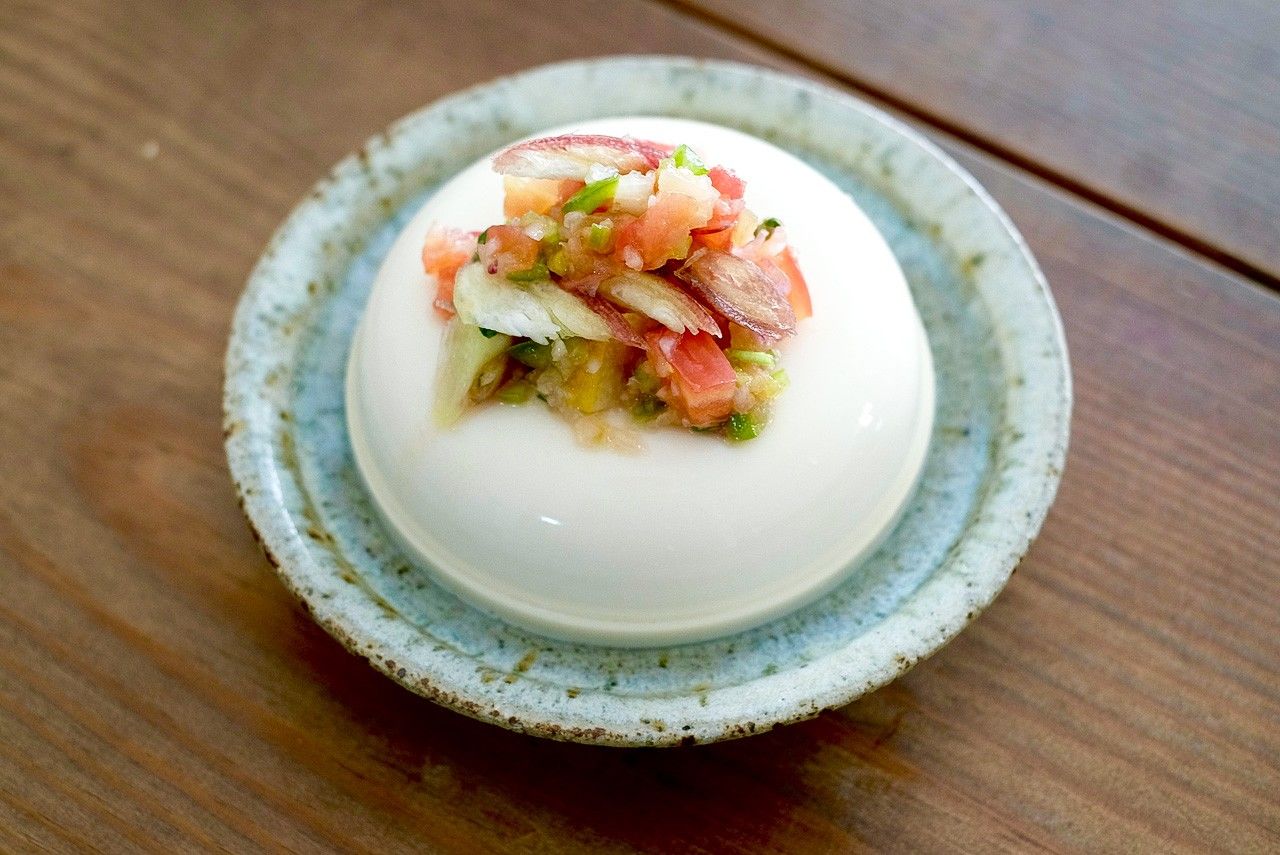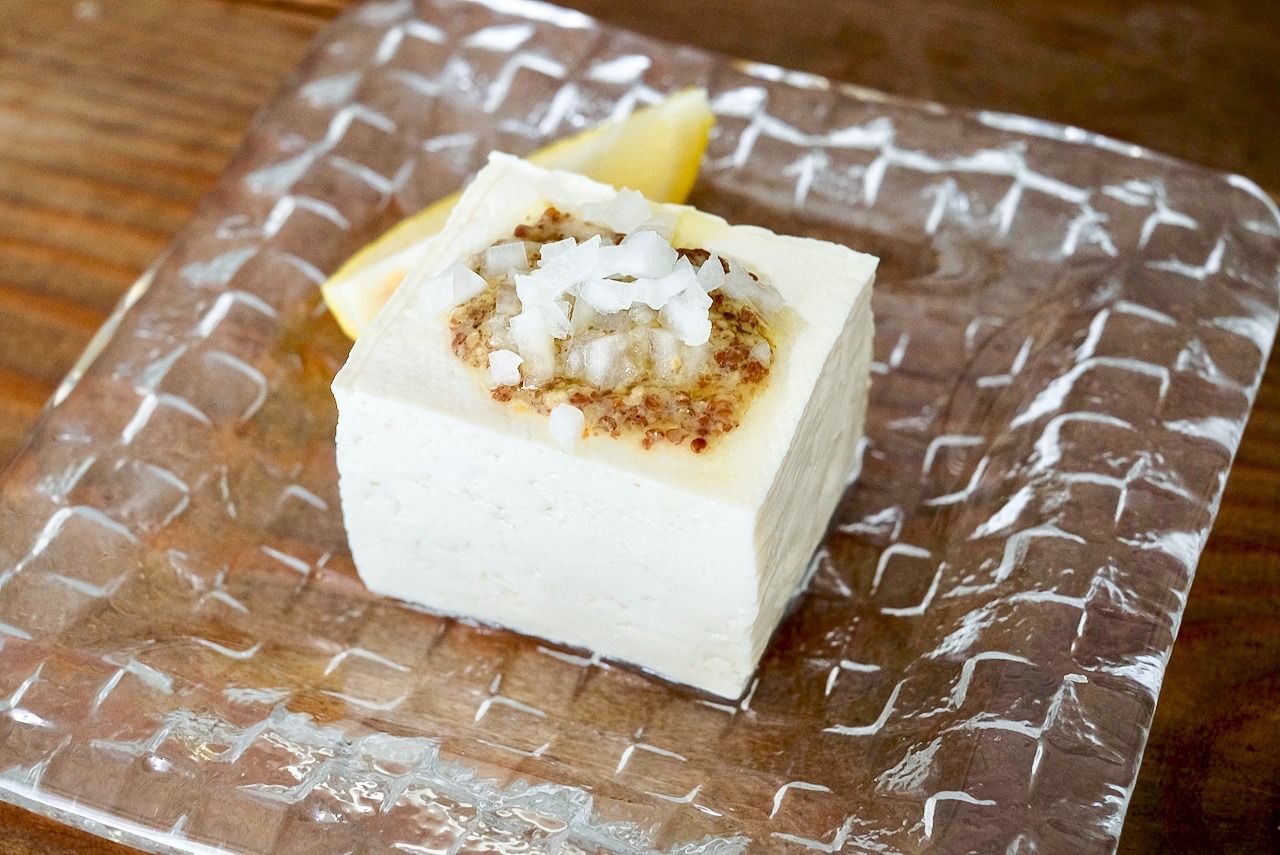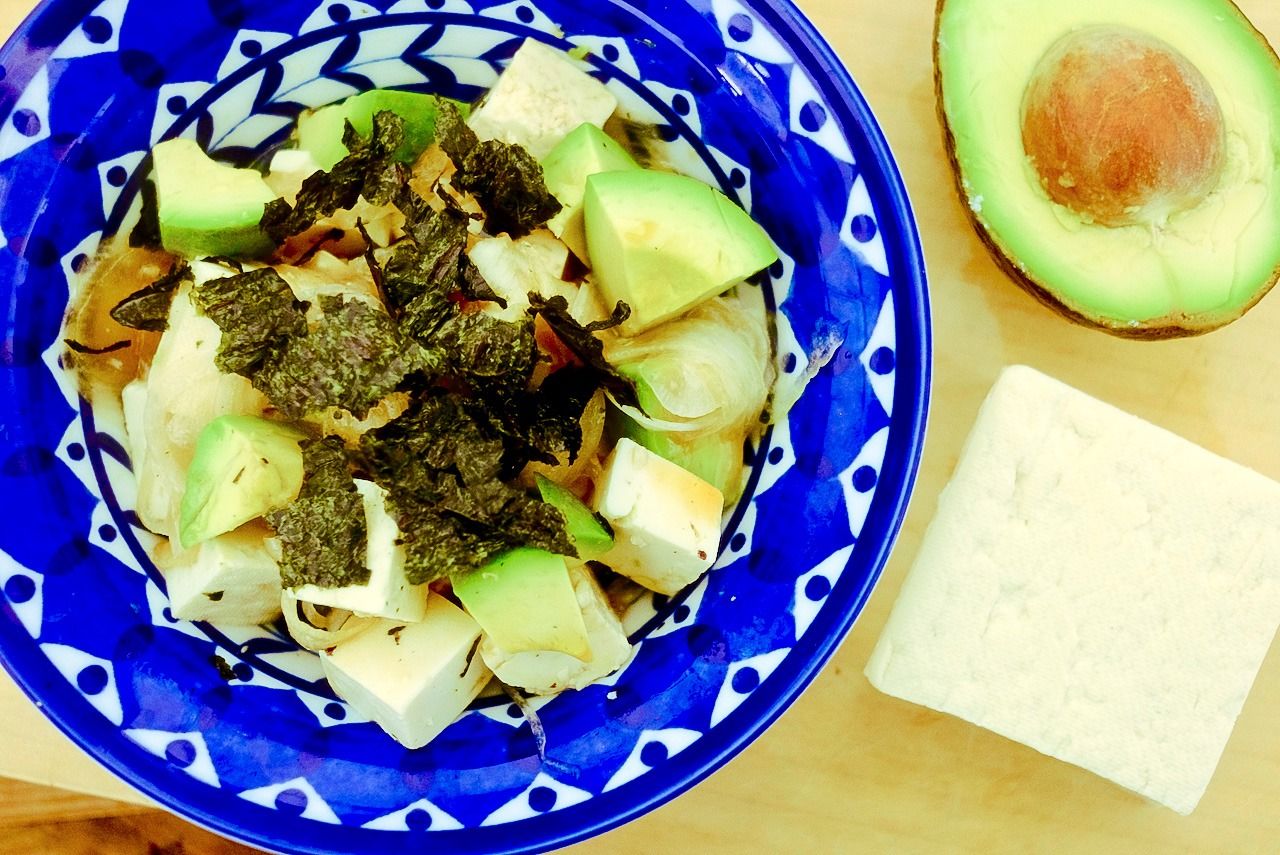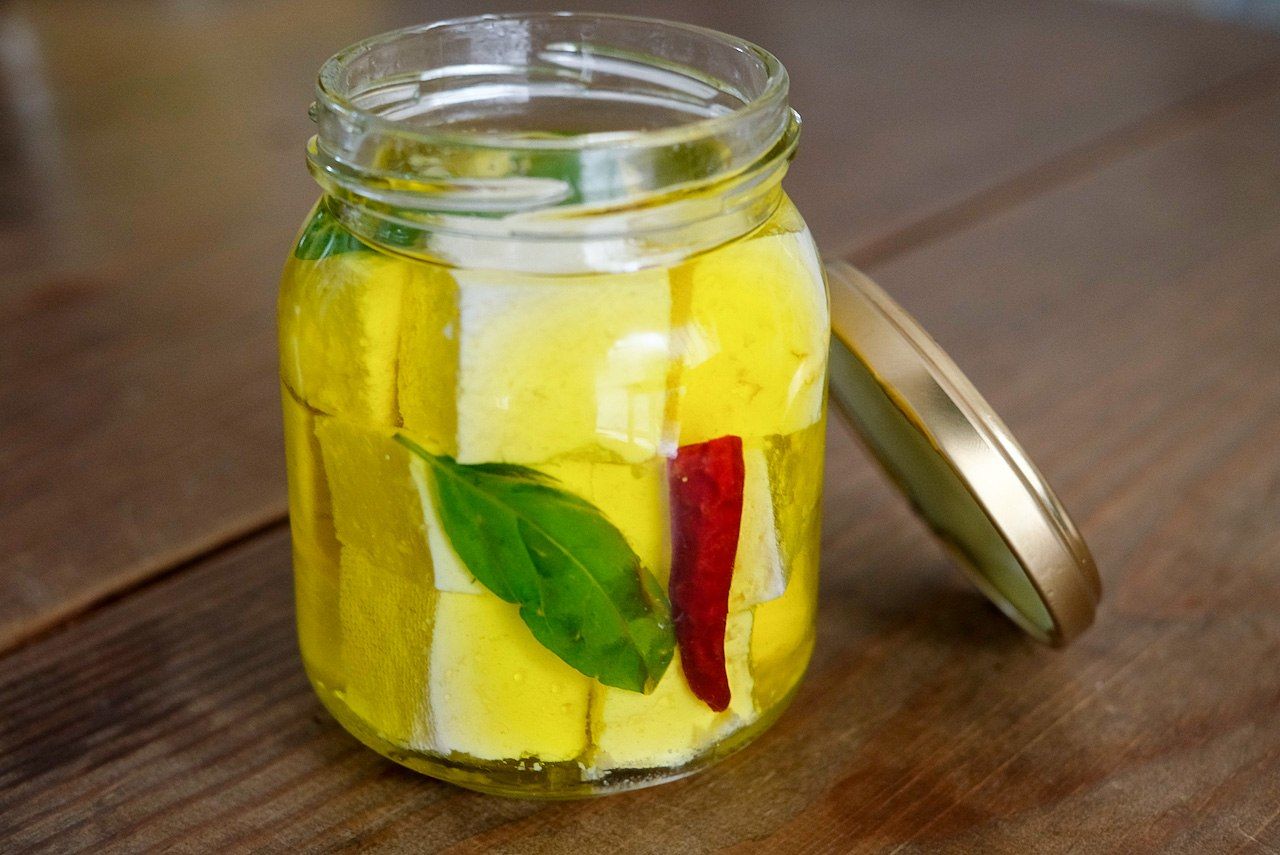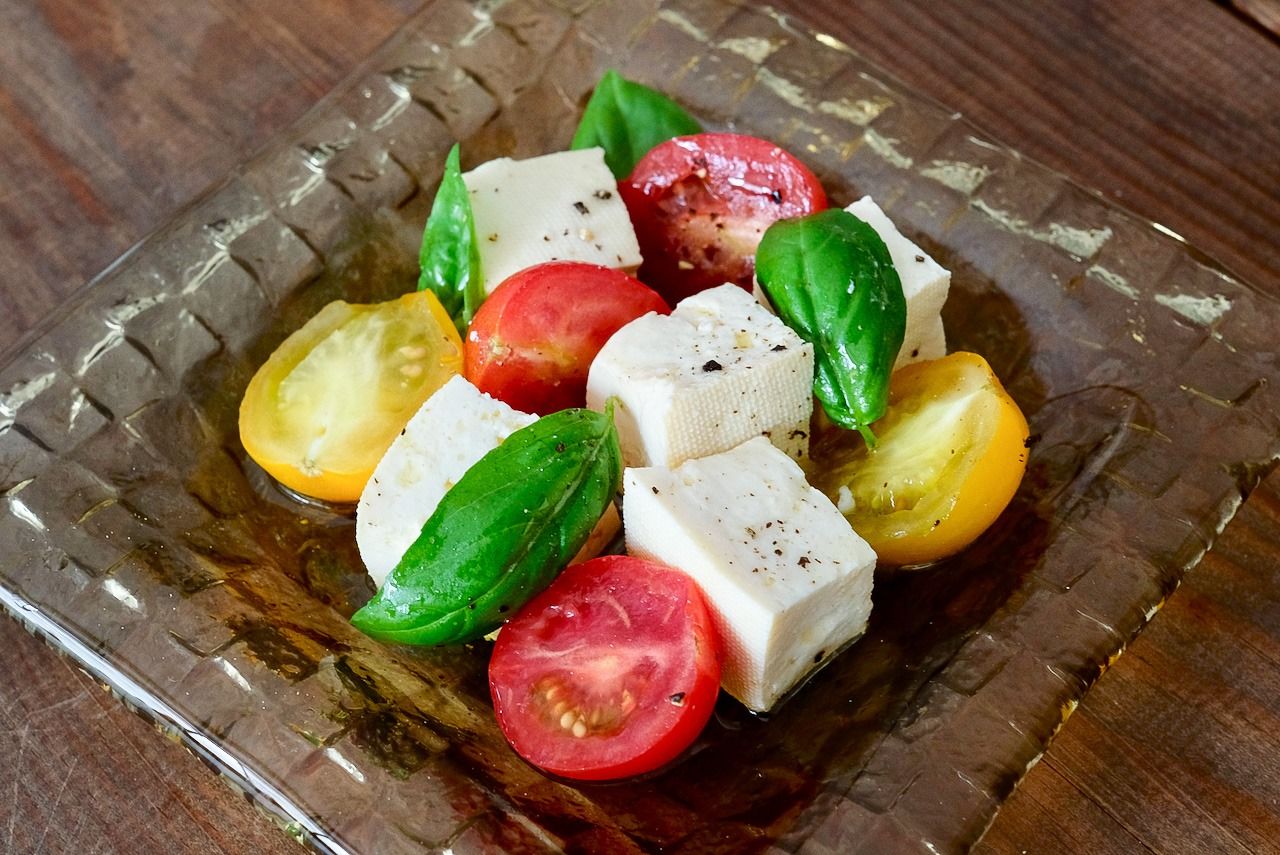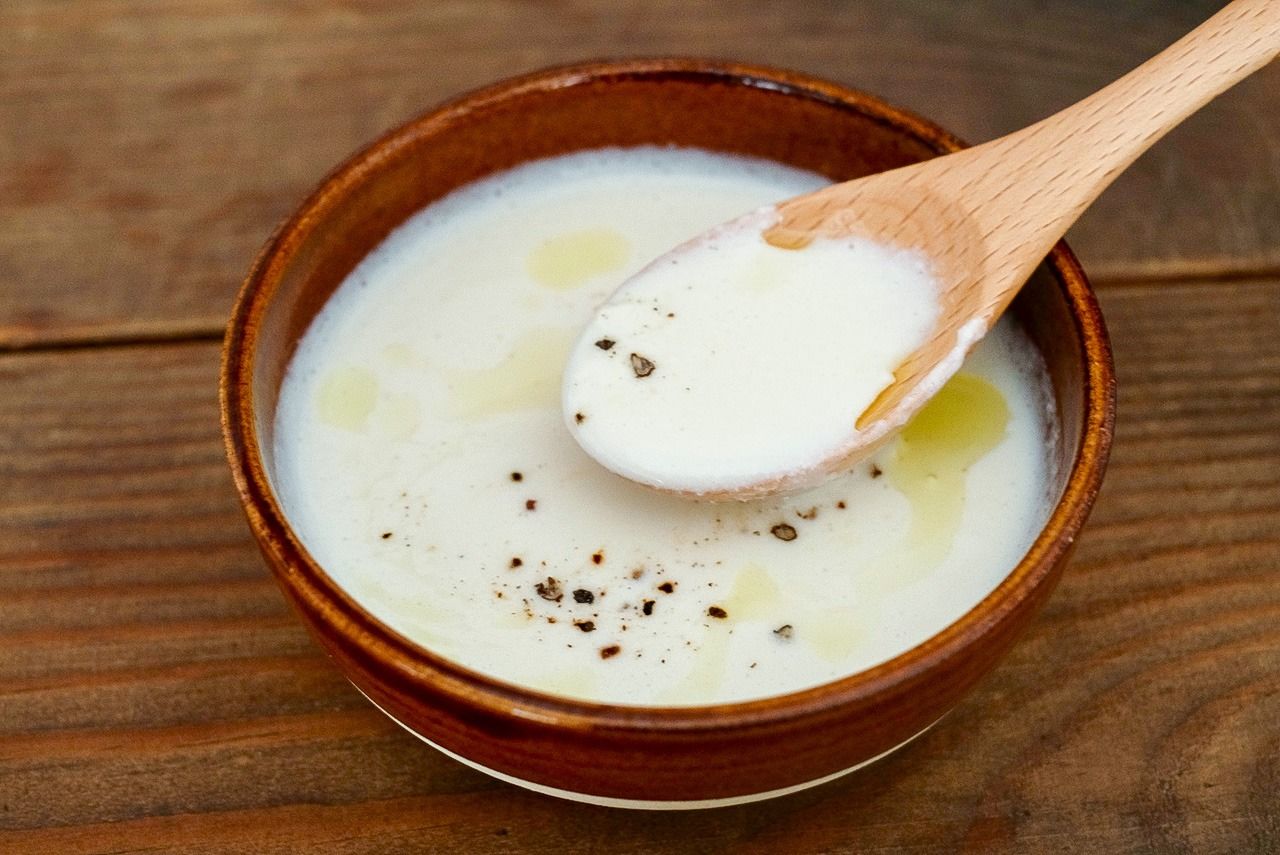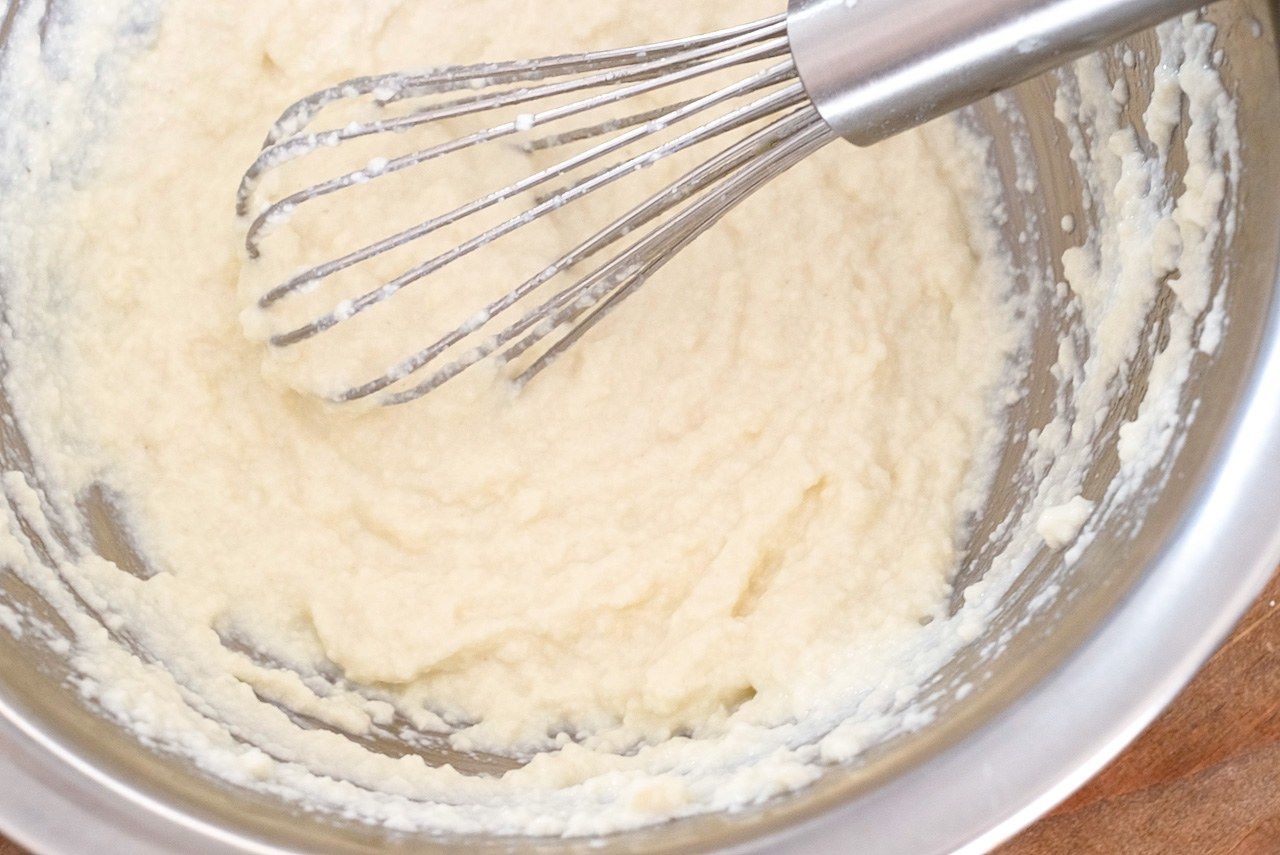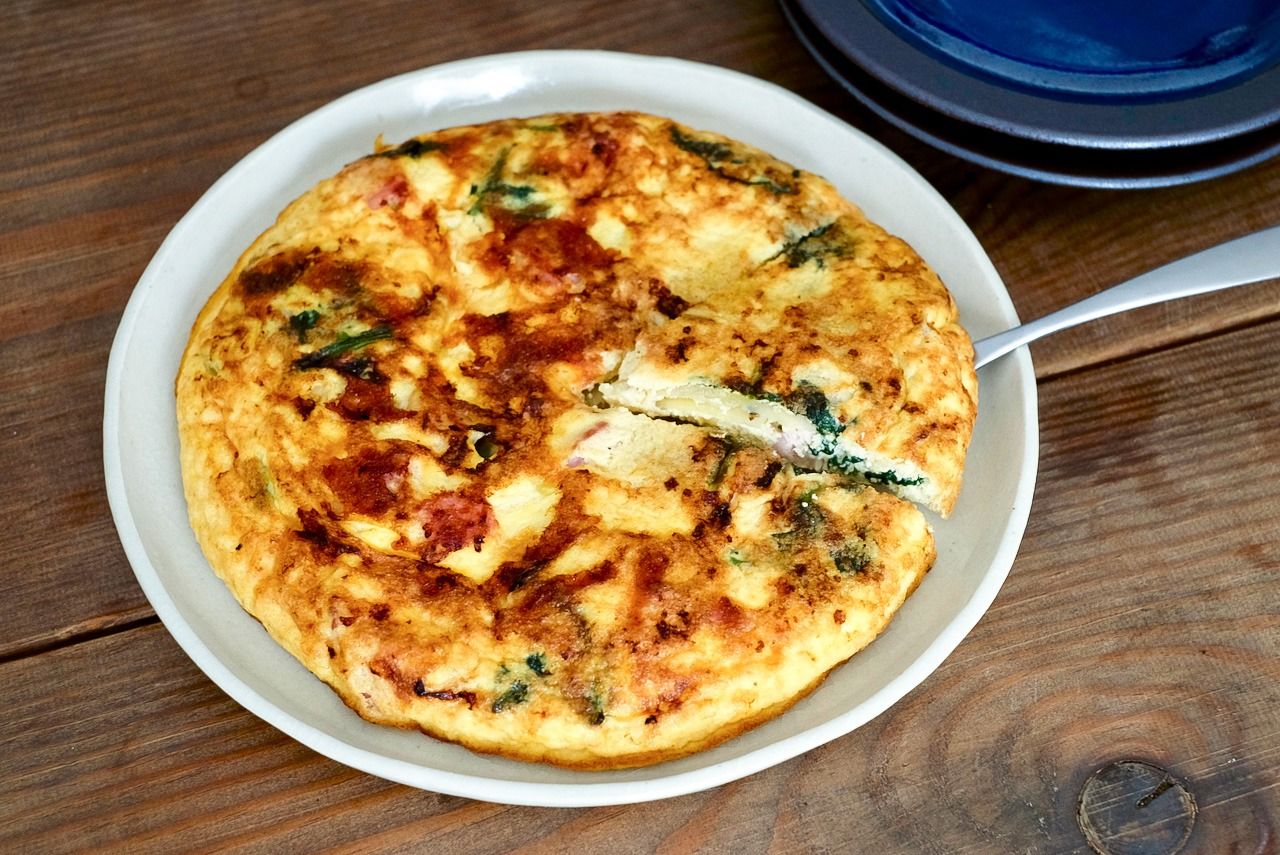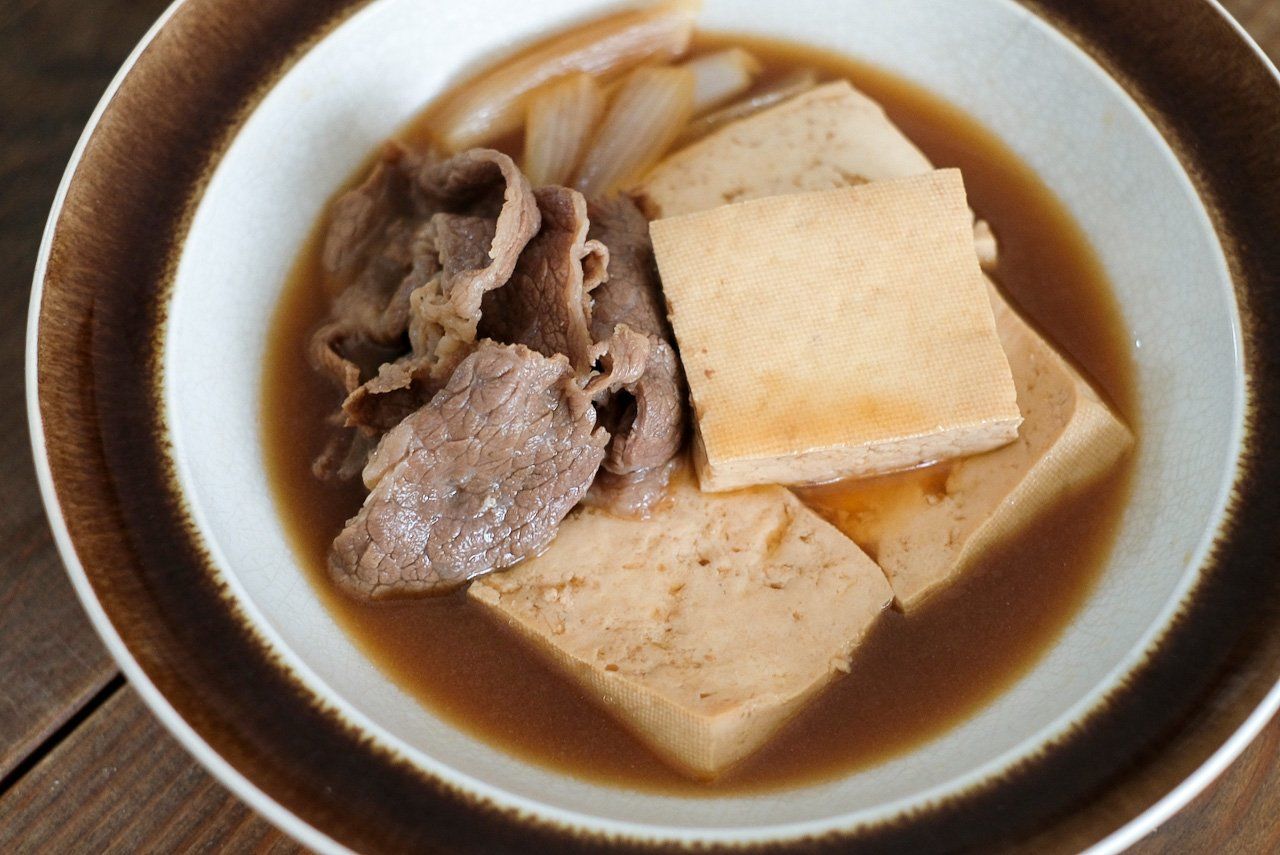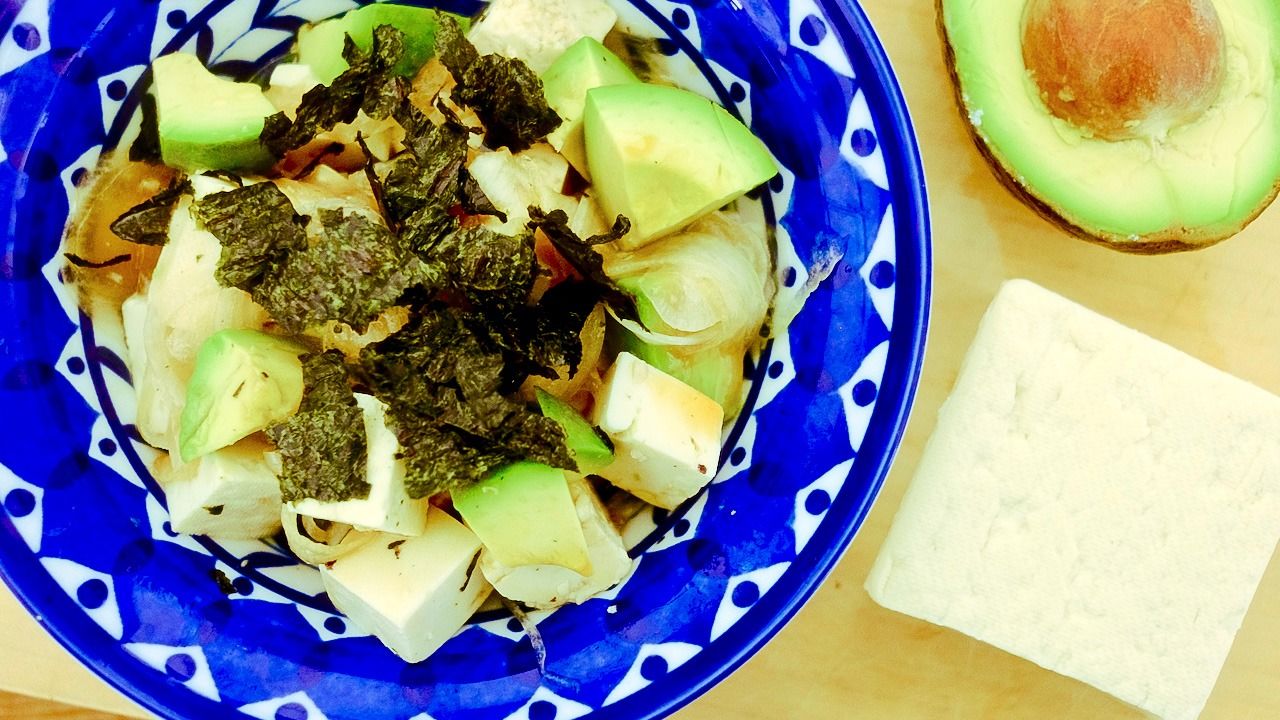
Tōfu Meister Kudō Shiori’s Recipe Picks
Food and Drink Culture- English
- 日本語
- 简体字
- 繁體字
- Français
- Español
- العربية
- Русский
Tōfu As-Is
Some artisans consider tōfu a kind of blank slate, because of its ability to blend with any ingredient. It is such a solid, basic food that it can be eaten simply as-is, as in the simple dish hiyayakko. First, though, I would recommend that when eating hiyayakko, let the tōfu sit out on a plate while you prepare the toppings so that it can warm up to room temperature. This brings out the depth of tōfu’s natural soybean flavor for more enjoyment.
Hiyayakko
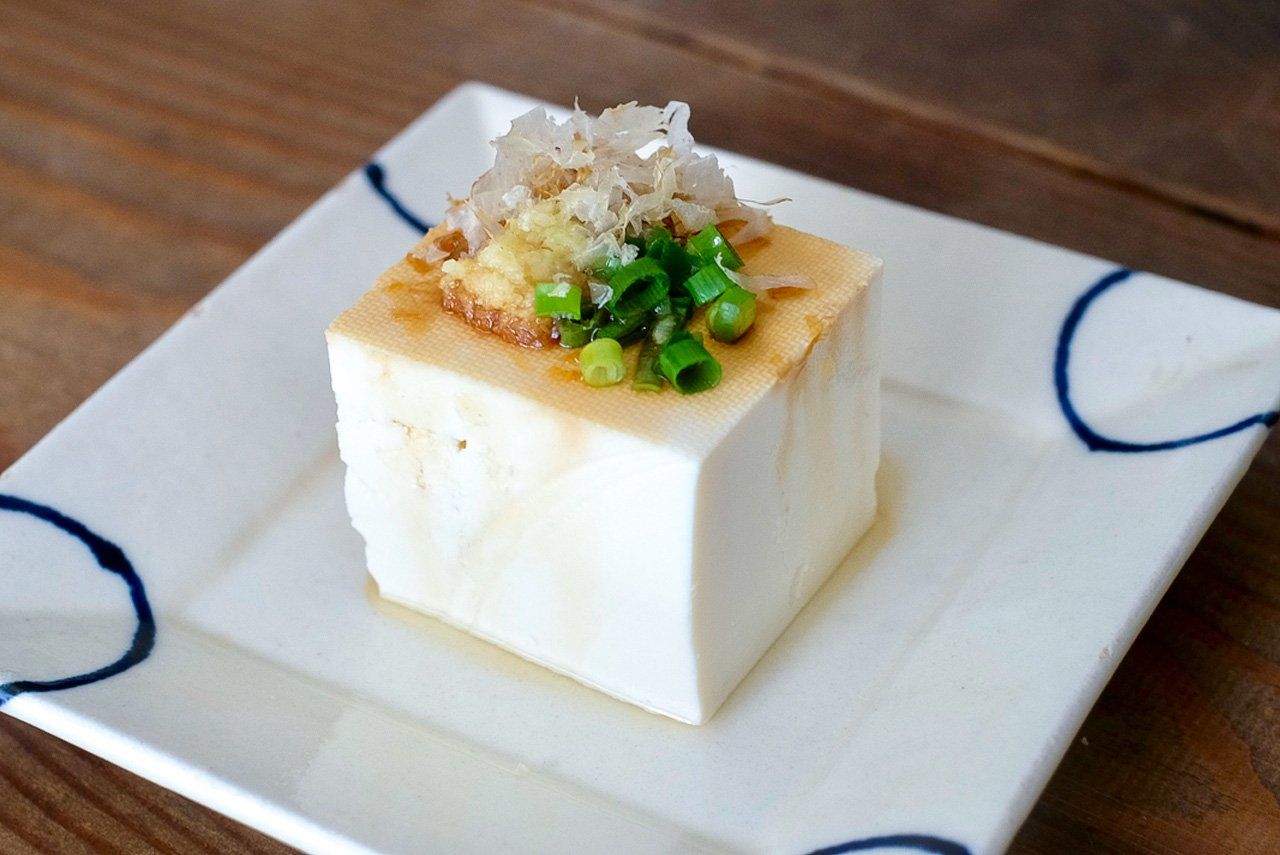
Hiyayakko, a classic Japanese taste of Summer.
Hiyakko is chilled tōfu cut into three to four centimeter blocks and topped with your favorite ingredients or seasonings. The standard is topped with grated ginger, chopped green onions, and shaved bonito flakes with a dash of soy sauce. Since it so easy to prepare and needs no heating, why not try out your own topping combinations and expand your repertoire even further?
Hiyakko adaptation: salsa mexicana-yakko
- Finely chop tomato, red onion, green pepper, and chili pepper.
- Add salt, olive oil, minced garlic, lemon juice, and coarse ground black pepper and chopped cilantro to taste. Mix it all up and pour over tōfu.
- A bit of cucumber can change the texture and aroma for a fun twist!
Hiyayakko adaptation: onion-lemon mustard-yakko
Enjoy refreshing zip and the crunch of fresh onions.
- Mix mustard, olive oil, and lemon juice. Pour over tōfu, then top with finely chopped onions.
- Feel free to add some grated rock salt if you feel it needs it.
Hawaiian poke style tōfu
This dish uses tōfu to recreate poke, Hawaii’s favorite dish. You can treat it like a salad, and spice it up by adding some wasabi or chili pepper.
- Cut momen tōfu into 2 to 3 centimeter cubes, then wrap in paper towels to dry for 10 minutes. Cut avocado into cubes and thinly slice onion.
- Mix two teaspoons soy sauce (ponzu is also acceptable) with 2 teaspoons sesame oil and 1/2 teaspoon salt, then combine with the above ingredients in a bowl.
- Arrange on a plate, and sprinkle with sesame seeds or nori seaweed, as you see fit.
Oil-marinated tōfu
Drying and marinating leftover tōfu in oil brings it back to life with a new texture and rich taste akin to feta cheese.
- Cut momen tofu into 2 cm cubes, wrap in paper towels, and let dry for about 1 hour without pressure, changing the paper occasionally (adding pressure can cause the tōfu to crumble).
- Pack the cubes into a lidded jar, leaving as little space as possible, then fill with olive oil until all the tōfu is covered.
- Add one teaspoon of salt, then your favorite herbs like deseeded chili peppers, basil, or rosemary. Close the lid, then move the jar around and tilt it, so the salt mixes evenly.
- Let sit in the refrigerator for at least 2 days, eat within 5 days.
Caprese-style salad with oil-marinated tōfu
The perfect appetizer!
- Arrange the oil-marinated tōfu from the recipe above with cherry-tomato halves and fresh basil leaves on a plate.
- Drizzle with oil from the marinated tōfu and top with coarse-ground pepper.
Oil-marinated tōfu is perfect for a variety of uses. You can crush it into a paste for sandwiches, mix it into potato salads, and much more.
Crushing
Tōfu pottage soup
The thick, smooth texture and satisfying richness of this pottage make it a great breakfast dish.
Adding boiled edamame beans, corn or steamed pumpkin is a great way to bring a touch of color. It makes a great a summer treat when chilled, too.
Ingredients (makes two servings)
- 150 grams (1/2 chō block) kinugoshi tōfu
- 200 milliliters soymilk
- 1 teaspoon consommé or bouillon powder
- 1/4 teaspoon salt
(replace salt with 1/2 teaspoon miso for more umami).
- Coarse-ground pepper to taste
- Olive oil to taste
Recipe
- Put all ingredients into a blender and mix.
- Put the mixture into a pot over low to medium heat. Stir well while heating, making sure it does not burn at the bottom. Be careful not to let it come to a boil.
- When serving, top with coarse-ground pepper and olive oil.
Spanish omelet style tōfu
The batter for these omelets, made with pureed tōfu mixed into the eggs, puffs up gently when steamed, and remains soft even when cool. Adding dried parsley or mixed herbs is an excellent way to increase the aroma. You can also add your favorite fillings, like tomatoes, mushrooms, or peas.
Ingredients (makes two servings)
- 150 grams (1/2 chō block) tōfu (either momen or kinugoshi)
- 3 medium-large eggs
- 65 grams (one small) potato
- 45 grams spinach
- 60 grams bacon
- 30 grams shredded cheese
- Salt to taste
- Pepper to taste
- Dried parsley or herbs as desired
- Olive oil as needed
- Ketchup as desired
Recipe
- Peel and halve the potato, then slice into 2 millimeter semicircles. Cut the spinach to bite-size, and slice the bacon into 1 centimeter pieces.
- Put the tōfu into a bowl and puree with a whisk until it is a thin paste (you may use a blender or food processor, as well).
- Add the eggs to the tōfu and mix well.
- Put butter in a frying pan, and sauté the spinach and bacon. Add salt and pepper to taste. When the mixture is thoroughly cooked, add it to the tōfu and egg mixture. Add the potato and cheese to the bowl and mix well.
- Heat an oiled pan (with olive oil or other oil) over low heat, then add the mixture, cover, and let steam for 8ー10 minutes.
- Once the bottom is thoroughly cooked, flip then continue to cook uncovered for five minutes. Once the bottom has browned, remove from heat.
- Cut into 6ー8 pieces, and top with ketchup if desired.
Stewing
Nikudōfu stewed meat with tōfu
Tōfu soaks up flavor like a sponge when stewing. You can quickly whip up the Japanese standard dish nikudōfu in a single skillet. Stewing tōfu at high temperatures can make it unpleasantly tough, so the key is to prepare a thicker broth and use the minimum amount of heat to encourage flavors to seep in and help the tōfu retain its ideal texture.
Ingredients (makes two servings)
- 150 grams (1/2 chō block) momen tōfu
- 150 grams thinly sliced beef
- Half an onion
- 3 tablespoons sake
- 1 tablespoon sugar
- 2 tablespoons mirin
- 3 tablespoons soy sauce
- 200 milliliter water
- Shirataki konjac yam noodle and shiitake mushrooms can be added to boost the volume.
Recipe
- Cut momen tōfu into 4ー5 centimeter blocks, then slice into 1.5ー2 centimeter slices and wrap in paper towels to dry for 15 minutes. Meanwhile, mix all the liquid ingredients in a bowl. Cut the beef into bite-sized pieces and cut the onion into wedges.
- Arrange the tōfu and onion in a deep frying pan, then add the liquid mixture and heat over low flame. Occasionally ladling the broth over the tōfu will help the flavor seep in.
(* Slicing the tōfu small enough to submerge completely will help it take on more flavor, as well.) - When the onions have gone translucent and the tōfu has taken on flavor, add water and increase to medium heat.
(* If the tōfu has not been drained enough, it will give off extra water, so you may need to decrease the amount added by 20ー50 milliliters). - Move the tōfu and onions aside to make space, then add the beef once slice at a time to let it cook thoroughly.
- Once the meat is cooked, remove the pan from heat and set aside for 10 minutes.
(* Stewing tōfu or beef at high temperatures for long periods can lead to it getting unpleasantly tough, so keep cooking time to the absolute minimum.) - Plate, and if some extra spice is desired add shichimi seven-spice or sanshō Szechuan pepper.
(Originally written in Japanese. All pictures © Kudō Shiori.)
